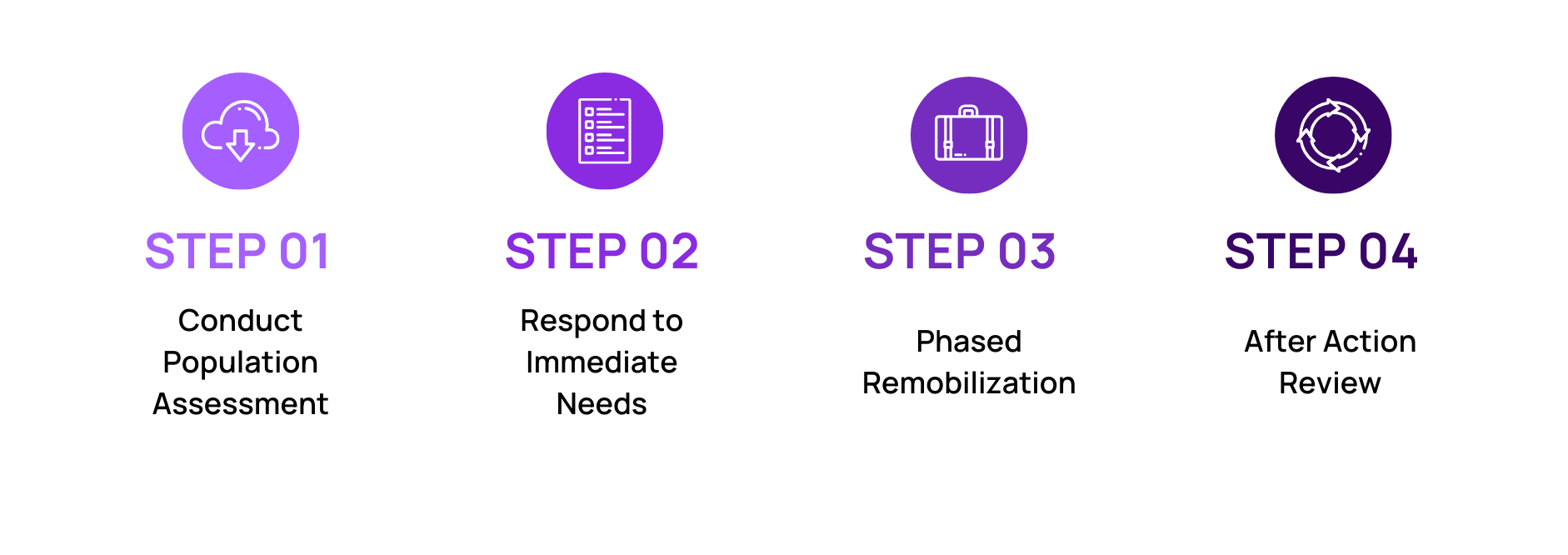
Blog
Crisis-Proofing Mobility – A Strategic Playbook For The Unexpected
Sirva's Crisis Management Playbook For Mobility
Natural disasters, political unrest, pandemics, and economic shocks can halt relocation plans overnight. For mobility professionals, navigating these challenges requires more than quick fixes, it demands a strategic, well-tested crisis plan. A thorough response, and rapid adaptation of strategies, is key to supporting your mobile employees and managing organizational expectations.
Sirva’s Crisis Management Playbook shares four defined steps to help your organization establish clear communication, provide timely updates, and offer tailored support services to keep your employees safe and business operations moving forward.
Four Key Steps to Crisis and Disaster Management Planning

What Does Strategic Crisis Management Look Like?
 | Prioritize your people first. Know exactly where your employees are, what stage they’re at in the relocation process, and what their immediate needs are. Real-time population assessments allow for fast, targeted responses—whether it’s temporary accommodations, mental health support, or emergency repatriation. |
 | Manage cost & cash flow impact. Crises often bring unplanned expenses: flight changes, medical emergencies, extended housing, and more. Organizations must have financial controls in place to track, assess, and manage these unexpected costs without delaying support. |
 | Maintain open, ongoing communication. Your employees need consistent updates and reassurance. Set clear communication cadences with mobile employees and internal stakeholders and collaborate with your relocation management company (RMC) to ensure swift, coordinated action. |
 | Adapt your timeline and relocation models. Expect and plan for delays. Paused assignments may resume, pivot to short-term relocations, or be cancelled altogether. Alternative models, such as commuter, rotational, or extended business travel, offer greater flexibility in uncertain times. |
 | Prepare for multi-phase remobilization. As crises ease, organizations must transition from immediate response to phased remobilization. This includes backlog management, updated cost projections, and prioritizing high-impact moves. Metrics and scenario planning are essential to avoid missteps in fragile post-crisis environments. |
 | Learn and evolve. After the crisis, conduct an after-action review to capture lessons learned. Update your mobility policies and business continuity plans accordingly. This is where mobility teams can demonstrate real strategic value—helping shape the future of work through smarter, more resilient relocation strategies. |
What is the Cost of Inaction?
Without a crisis-ready mobility plan, you risk failed relocations, rising costs, and lost talent. Employees may feel unsupported, disengaged, or unwilling to relocate, and organizational agility suffers. A proactive approach critical, so download Sirva’s Crisis Management Playbook today.
Sirva can help you build a mobility program that is agile and strategic. For personalized support or to build your own Crisis Management Playbook, contact us at GlobalAdvisoryServices@sirva.com.
